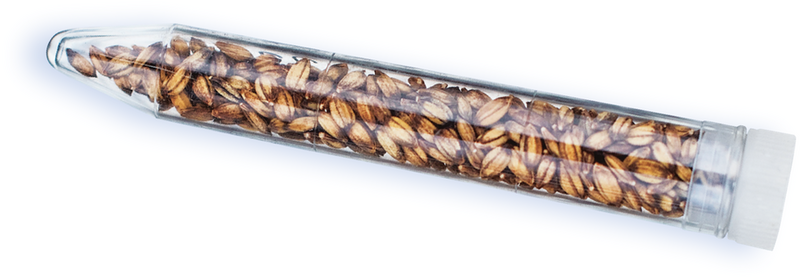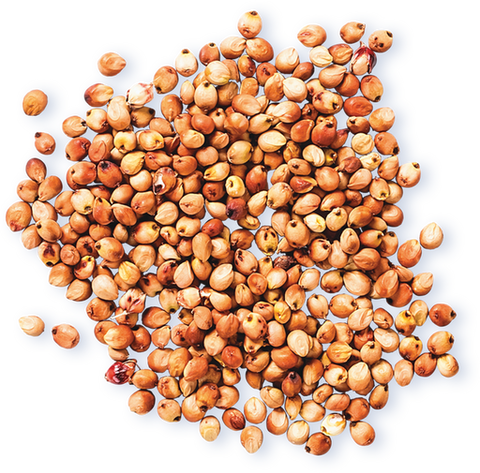Fromtheair,it’satinygroupofislandshalfwaybetweenNorwayandtheNorthPole.Svalbard.Itsnamemeans“coldcoasts”inIcelandic.Thenamesuitsit.It’salandscapeofsnowand ice.
NearaplacecalledPlateauMountain,asliverofmetalsticksoutfromthesideofthemountain.It’sasilverwalkwayleadingtoadoor.Seemsstrangetofindadoorhere,inthesideofamountain.Whatisthis place?
Justpastthedoorisanarrow,concretehallway.Attheendofthehallwayisalockeddoor.Beyondthelockeddoor,thefloorslopesdownalongtunnel.Theairiscoolerhere.Overhead,pipespushcoldairfurtherdownintothemountain.Atthebottomofthetunnelarethreedoors.Themiddleoneiscoveredin ice.
Behindtheicydoor,therearerowsandrowsofshelves.Theyfilltheroom.Theshelvesholdboxafterboxafterbox.Insidetheboxesareseeds.WelcometotheSvalbardGlobalSeed Vault.
Hallways,tunnels,anddoorsleadtoavaultfilledwith seeds.


Theseseedsarestoredinglass tubes.
ProtectingDiversity
TheSvalbardseedvaultwascreatedtoprotectandstoreasmanyuniquekindsofseedsofcropplantsaspossible.Why?Thinkofitasaninsurancepolicyforfutureglobal agriculture.
Asourworldchanges,weneedtobeprepared.Cropsmayfailinanareaduringapestinfestationorasaresultofclimatechange.That’swhenweneedtoreplacethosestrainsofseedswithnewones.Onesthataretoughenoughtotoleratepests.Oronesthatcanhandleflooding.Oronesthatcantakeonextremetemperaturesorpoorsoilconditions.Thesesuper seedsmightbepresentinsomeraretypesofcropplants.Butwemaywanttobreedonekindofplantwithanothertogettheseedweneed.So,it’simportanttohavealargesupplyoftherawmaterialsavailableto us.


Unfortunately,thatpoolofplantsisshrinking.Wearebeginningtolosedistinctivekindsofseeds.RecordsshowthattheUnitedStateshad500 varietiesofcabbageand285 typesofcucumberforsalein1903.By1983,theNationalSeedStorageLaboratorylistedonly28 kindsofcabbage.Andjust16 typesofcucumber.Thatchangewasthesameforotherkindsofseeds,too.Americalost93 percentofitsseedtypesinonly80 years.
SeedlossisnotlimitedtotheU.S.Chinahasseenasharpdeclineintypesofrice.Only10 percentofthetypesofricethatwerebeinggrownthereinthe1950sarestillbeinggrown today.
Overtime,therehavebeenmanychangesinagriculture.Peoplenowproducecropswithmachinesonlargerscales.That’sgreat -morefoodformorepeople.But,only30 cropsprovideabout95 percentofourfoodenergyneeds.Wearerelyingonveryfewkindsoffoods.Yet,theworld’sfoodsuppliesarealwaysatriskofdiseaseordroughtorotherproblems.So,storingseedsforthelongtermisasmart idea.

LongLife
Seedsarekeptinthevaultunderspecificconditions.Someseedscanremainthatwayfor50to75 years.Others,likethegrainsorghumusedtomakelivestockfeed,couldstillgerminate20,000 yearsfrom now!
Crop
Expectedlife(in years)
Barley
2,061
Chickpea
2,613
Lettuce
73
Maize (corn)
1,125
Onion
413
Pea
9,876
Rice
1,138
Wheat
1,693
sorghum

Map of Washington, D.C., 1860s
The White House
Peterson House
Ford's Theatre
United States Capitol
Smithsonian Institute
Washington Monument
POTOMAC RIVER
